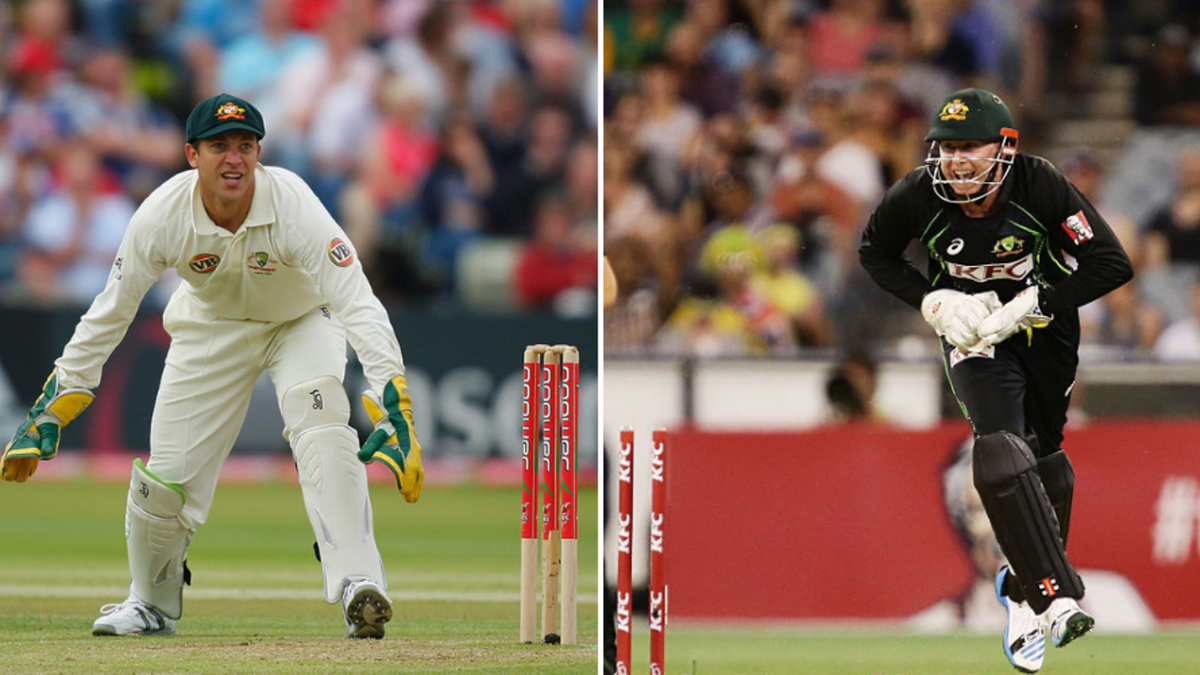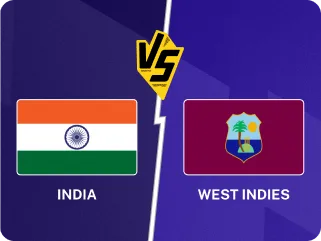
An Ashes stumper, a World Cup winner and two dual-nationality players – here are the Australia wicketkeepers from this century that you may have forgotten.
At the beginning of the 21st century, there was hardly anyone who could dethrone Adam Gilchrist from his spot in the Australia side. However, once he was done, Australia went through a brief phase where they tried out a mix of ‘keepers, with Brad Haddin, Matthew Wade and much later Tim Paine emerging as able options.
There’s still no clear all-format winner though, as the team juggles between different wicketkeepers for different formats. Along with Gilchrist, Haddin, Wade and Paine, Peter Nevill and Alex Carey played at least 25 international games in the period, and haven’t been considered.
Below, we look at the rest of the lot.
Note: The statistics mentioned here pertain to their numbers as specialist wicketkeepers, starting from January 1, 2000.
Cameron Bancroft (2016)
T20Is: 1, Runs: 0, Catches/Stumpings: 1/0
Bancroft isn’t exactly forgotten – given the events of March 2018, he might not be forgotten for at least half a century. What is usually overlooked, though, is that he kept for Australia in a T20I – his only game in the format. It was an unmemorable outing on the whole, with India hunting down 198 in a last-ball thriller, but there some criticism directed his way after the game. Brad Haddin was ‘shocked’ with the selection, questioning ‘part-timer’ Bancroft’s glovework after he made a meal of a stumping involving Suresh Raina, who went on to play a match-winning knock. He’s been a sporadic presence in Test cricket, also featuring in the 2019 Ashes.
Ben Dunk (2014)
T20Is: 5, Runs: 99 runs, Avg: 19.80, HS: 32, Catches/Stumpings: 4/2
A popular name in franchise T20 cricket, Ben Dunk played all his five T20Is between 2014 and 2017. He earned a call-up on the back of a prolific 2013/14 BBL season, where he topped the run-charts, averaging 43.88. That success didn’t quite materialise at international level, and he was left out after three games against South Africa, opening in two of them. Three years later, after another bumper BBL season, he returned as a replacement for the injured Chris Lynn as a specialist batsman, but couldn’t quite nail a place. At 33, his chance might have passed.
Graham Manou (2009)
ODIs: 4, Runs: 76, Avg: 19.00, HS: 30, Catches/Stumpings: 5/0
Tests: 1, Runs: 21, Avg: 21.00, HS: 13*, Catches/Stumpings: 3/0
Ten years after breaking into the South Australia state team, Manou was drafted as an understudy to Brad Haddin for the 2009 Ashes. Ahead of the third Test, Haddin broke his finger, and Manou made a dramatic debut. It was so sudden, that Manou wasn’t even presented with his Baggy Green before the game; unfortunately, it was the only Test he wore it in.
Happy birthday to Australian wicketkeeper Graham Manou!
Who remembers when he hit the sign in Adelaide to win his team A$50,000 in Feb 2003?pic.twitter.com/MEQUlPhM39
— 🏏Flashscore Cricket Commentators (@FlashCric) April 23, 2020
He did go on to play four ODIs, travelling to India a month later as an emergency replacement, this time for Tim Paine. Soon after, Paine and Matthew Wade became more favoured options, and Manou retired from all cricket in 2012.
Jimmy Maher (2003)
ODIs: 4, Runs: 76, Avg: 19.00, HS: 30, Catches/Stumpings: 8/0
A heavy run-scorer in domestic cricket, Maher, an occasional wicketkeeper, stood behind the stumps in four of the 24 ODIs he played after the turn of the millennium, all in 2003. One of them was in the 2003 World Cup, where he was the second reserve-wicketkeeper alongside Brad Haddin, getting the gloves against the Netherlands. Two months later, he was flown in for the tour of the West Indies as cover for Adam Gilchrist, but ended up playing his final one-dayer later that year. Pipped by Haddin for the back-up keeper’s slot, he continued to play first-class cricket for the next five seasons, also featuring in the tainted Indian Cricket League.
Ryan Campbell (2002)
ODI: 2, Runs: 54, Avg: 27.00, HS: 38, Catches/Stumpings: 4/1
Campbell’s incredible cricketing story took him to the 2016 T20 World Cup, where he played for Hong Kong as a 44-year-old, 14 years after he played his last ODI. It felt ages after his Australia career had been wrapped up, ending after just two matches.
Proud moment for Ryan Campbell, presented his 1st Hong Kong cap by Director of Cricket Charlie Burke. #HKproud #WT20 pic.twitter.com/lp4ix0gwtY
— Cricket Hong Kong, China (@CricketHK) March 8, 2016
Campbell made rapid strides in the late Nineties in the Western Australia team with Adam Gilchrist, serving the national side, and managed to reach the senior level in January 2002, replacing Gilchrist, who was on paternal duty. Another appearance came in December that year, and he even made it to the 30-man preliminary squad for the 2003 World Cup, but did not play a game for Australia thereafter.
Luke Ronchi (2008)
ODIs: 4, Runs: , Avg: HS: , Catches/Stumpings: 5/2
T20Is: 1, Runs: 36, Avg: 36, HS: 36, Catches: 0/0
Another remarkable story. One would have thought Ronchi’s international career had ended after he had been dumped by his state team in 2008/09, soon after he had briefly entered the national side, filling in for Brad Haddin. The stint was sweet but short – he hit a 22-ball fifty in one of the ODIs, and scored a 22-ball 36 in his only T20I for the team. The glovework was neat and efficient too, but with Haddin back in the setup, Ronchi’s chances diminished, forcing him to opt for a radical change.
He entered the New Zealand domestic setup and quickly rose through the ranks, and managed a decent career for the Black Caps that took him till the 2015 World Cup final. Earlier this week, he was named batting coach of the New Zealand national team.
Peter Handscomb (2017-2019)
ODIs: 3, Runs: 10, Avg: 3.33, HS: 7, Catches/Stumpings: 5/0
T20Is: 2, Runs: 33, Avg: 33, HS: 20*, Catches/Stumpings: 0/0
Handscomb, like Bancroft, is still in the Australia mix, but it’s easy to forget that he’s fulfilled wicketkeeping duties for the team at odd instances. He kept in three ODIs in 2017, and later found a surprise job as the first-choice wicketkeeper in two T20Is in India. Hopes of making it to the 2019 World Cup as a wicketkeeper faded after Alex Carey’s quick rise, and while Handscomb did end up participating in the tournament, as an injury replacement for Usman Khawaja, he seems to have fallen behind in wicketkeeping discussions, more so with Matthew Wade’s re-entry in the T20I set-up.








